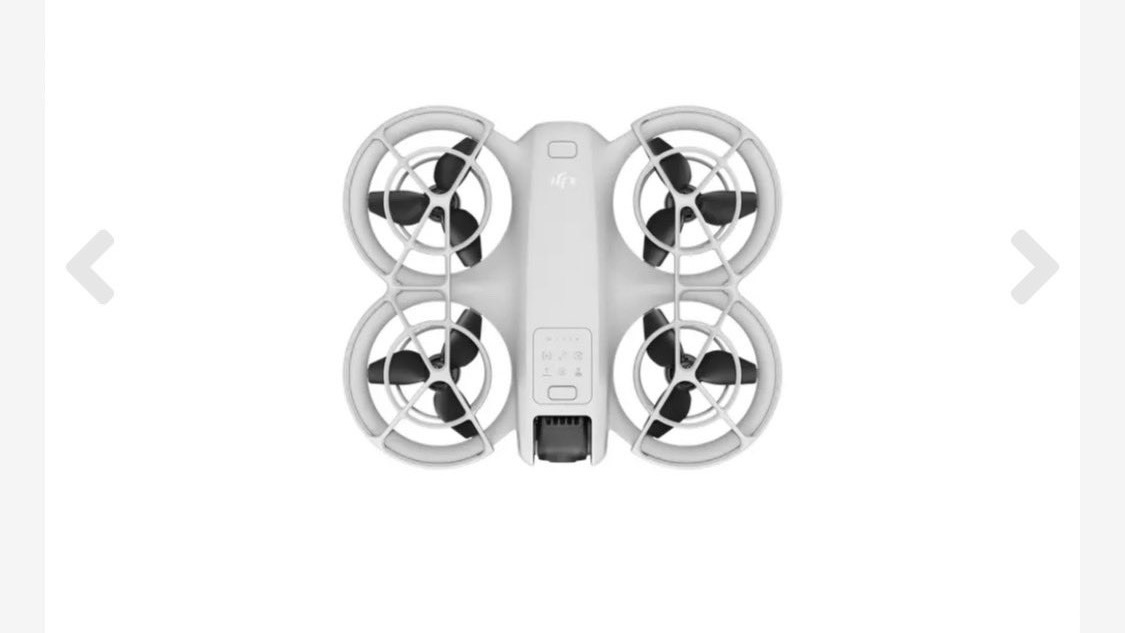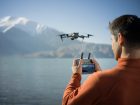
We’ve been patiently waiting for the announcement of DJI‘s new product line, Neo. With the rumored date coming up tomorrow and a ground breaking leak by Jasper Ellens, here’s a round up of everything we know thus far about the DJI Neo drone.
Following the large popularity by previous “flying cameras,” it looks like DJI is taking on the competition with its take on the product. Called the DJI Neo, it is expected to be tailored towards novice flyers or those looking for an easy to use and compact system to capture a few photos and videos during an outing.
However, it won’t be a carbon copy of the failed Snap Pixy or the popular HoverAir X1, this is DJI after all, they make drones, not flying cameras.
The most recent leak came today by Jasper Ellens that shared screenshots from an Australian store with everything the DJI Neo will be able to do. It includes:
- 4K 30 fps video (1/2 inch sensor, single axis gimbal)
- 22 GB of internal storage
- Automatic take offs and landings from your palm
- Quickshot photo and video modes
- Voice control
- Remoteless flight using nothing but your phone
- Compatibility with yet to be released RC-N3 controller
- FPV manual flight when using FPV and Motion 3 controllers and goggles
- AI tracking algorithms
- Level 4 wind resistance and stabilized images/video
- DJI Mic 2 compatibility for rotor free audio
- 18-minute flight time (claims enough for 20 flights)
- $299 (AUD) price tag for possibly standard bundle
It doesn’t look like DJI was pulling any punches when it was given the chance to compete with HoverAir for king of the “flying cameras.” While HoverAir just recently announced its X1 Pro and Pro Max products, the only area it can compete on is video resolution, coming with 8K 30 fps and 4k 120 fps video.
For me, the two most ground breaking features are the 22 GB of storage and support for the Mic 2 through the Fly App. Unless you find yourself in an emergency and all your SD cards are either full or left at home, the idea of using the drone’s internal storage almost never comes across a pilot’s mind. For the Mavic 3 Pro, Classic and Air 3, the internal storage is 8 GB, and let’s not even discuss the almost useless 2 GB of space on the Mini 4 Pro. Unless you’re flying the Mavic 3 Cine with its 1 TB of internal storage, it’s rarely a contended for a spec customers are looking for.
However, the DJI Neo does not plan to support any forms of SD cards according to Ellens, making the 22 GB of space a necessity. Maybe this is a start of 32 GB SSDs making their ways into all DJI products in the future? (PLEASE!)
A second feature I think worth featuring is the Mic 2. According to the listing, you will be able to connect your Mic 2 to the Neo through the Fly App, allowing synced audio for vlogs. It also states the ability to have rotor free audio for when you are filming low altitude video with the Neo.
I think this feature makes it obvious what market DJI is hoping to target the Neo after. Small creators that haven’t made it big enough to hire editors or those just looking to share an adventure with friends and family don’t want to figure out syncing up audio in editing software.
Before this market was pushed towards buying DJI’s Mini lineup of drones, but even those are now much more expensive and overly complicated for those who just need a few short videos to post to Instagram or TikTok.
No event announcement yet…
The original leaked announcement date was set for August 20, tomorrow. However, DJI has yet to announce any event announcements to its social platforms.
This likely means that either DJI will not be announcing any new products tomorrow or the product will only be available in China. This wouldn’t be the first time DJI has left the world on hold while it does an initial launch of a new product over seas.
We saw this with the FlyCart and most of the company’s agriculture drones but both eventually became available to the rest of the world. Given the increased popularity of the HoverAir X1 over in China versus outside it, it might also make sense to only make it available there before bringing it everywhere.
It also doesn’t help that many “western” countries are not the most welcoming to Chinese drone manufactures at the moment, predominately us here in the United States.
FTC: We use income earning auto affiliate links. More.




Comments